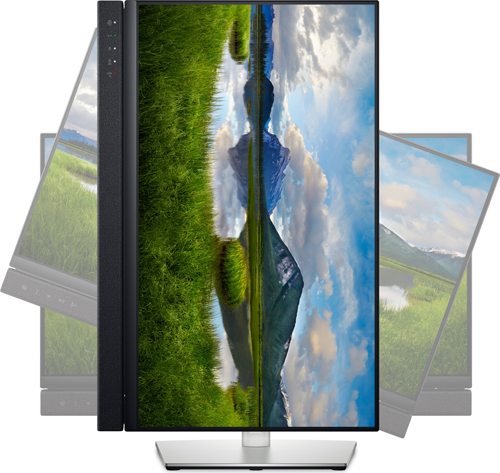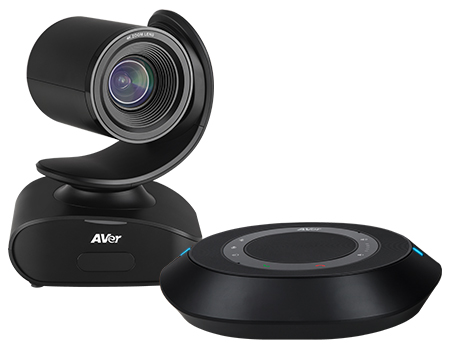Posey's Tips & Tricks
To Get the Most from Microsoft Teams, Have Good Hardware
After showing up at a Teams conference looking distinctly blue, Brien went looking for a better videoconferencing setup that's specifically designed for Teams meetings. Here are the three devices that caught his eye.
Back when the world shut down and physical events were replaced by virtual conferences seemingly overnight, I made sure to invest in a really high-quality webcam. I speak at a lot of events and wanted to make sure I had the technology in place to deliver the best possible quality on various online platforms.
Despite my best efforts, however, things haven't always gone as planned. Last week, I spoke at a virtual conference that was done over Microsoft Teams and, for whatever reason, my webcam made me look blue. No matter what I did, I could not seem to correct the color. I was hoping the problem was just on my end, but one of the moderators actually asked me about it. Since I couldn't do anything to correct the problem, I held my blue energy drink up to the camera and jokingly said that maybe I needed to ease up on the artificially colored beverages.
After the event, as I tried to figure out why that happened, I remembered some announcements from Microsoft Ignite pertaining to new hardware that's designed to help users get the most out of Teams. I didn't pay much attention to the announcements at the time, but after participating in an event in which my hardware caused a major distraction, the idea of using hardware that is certified for Teams use suddenly seemed a lot more relevant.
Microsoft actually made several announcements at Ignite regarding hardware that was either especially designed for Teams or certified for use with Teams. I'm not going to cover all of them here, but I do want to mention a few that stood out to me.
One new piece of hardware designed for use with Teams is Dell's new Video Conferencing Monitor. This monitor is available in a variety of sizes and includes a set of features designed to help users get the most out of Teams (and presumably other video conferencing platforms).
 Dell's 24-inch Video Conferencing Monitor
Dell's 24-inch Video Conferencing Monitor
It kind of goes without saying that Dell integrated a webcam into its new monitor, but it also took things a step further and used an infrared webcam. That means the webcam can be used for Windows Hello authentication.
Dell also designed its video conferencing monitor so it could be rotated into a vertical orientation. I'm not sure how well-suited a vertical orientation is for video conferencing, but I have used vertical monitors with other Office applications such as Word and found the change in orientation can really help with my productivity.
Other features found in Dell's video conferencing monitor include a noise-canceling microphone that can be used with Cortana and a series of buttons specifically designed for use with Teams. These buttons let you join a meeting, launch the Teams application and respond to notifications.
Dell isn't the only company making hardware for Teams. Poly makes a Teams-certified webcam known as the Poly Studio P15. What makes this particular webcam so unique is its ability to perform motion-tracking. As you move around, the Poly Studio P15 follows you, keeping you centered in the frame.
 Poly's Studio P15 webcam
Poly's Studio P15 webcam
The Poly Studio P15 also does audio-tracking. It automatically adjusts the microphone when you move around, while also blocking out background noise.
Aver also makes webcams that are certified for Teams. Whereas the Poly Studio P15 camera is geared toward personal use, the Aver cameras are more of a conference room solution.
It was Aver's newest camera, the VC540, that I first thought about after my incident with the blue video. The 4K camera constantly adjusts to changing lighting conditions to make colors look as natural as possible.
 Aver's VC540 camera
Aver's VC540 camera
Besides its image sensor, there are a couple of other things that make the VC540 unique. For starters, the camera uses Bluetooth to pair to an external speakerphone, rather than rely on a microphone that is integrated into the camera.
The other thing that makes this camera so unique is that it is equipped with a 16x zoom. As such, the camera is able to automatically zoom in on meeting participants who are speaking.
I haven't had the opportunity to try out any of these devices for myself, but my recent experiences underscore the importance of using Teams-certified hardware, and so I wanted to take the opportunity to talk about some of the more innovative devices that are available.
About the Author
Brien Posey is a 22-time Microsoft MVP with decades of IT experience. As a freelance writer, Posey has written thousands of articles and contributed to several dozen books on a wide variety of IT topics. Prior to going freelance, Posey was a CIO for a national chain of hospitals and health care facilities. He has also served as a network administrator for some of the country's largest insurance companies and for the Department of Defense at Fort Knox. In addition to his continued work in IT, Posey has spent the last several years actively training as a commercial scientist-astronaut candidate in preparation to fly on a mission to study polar mesospheric clouds from space. You can follow his spaceflight training on his Web site.